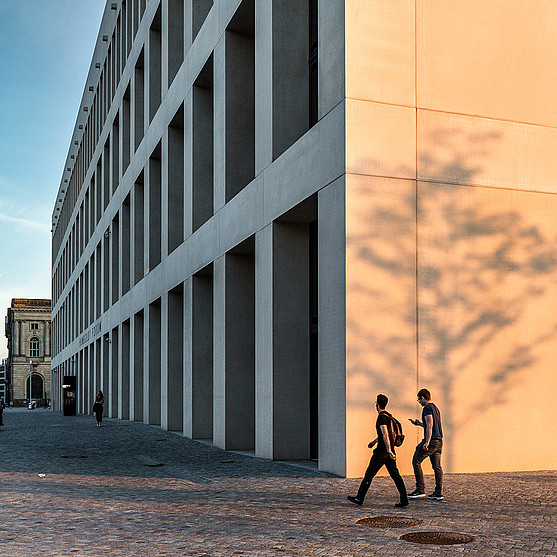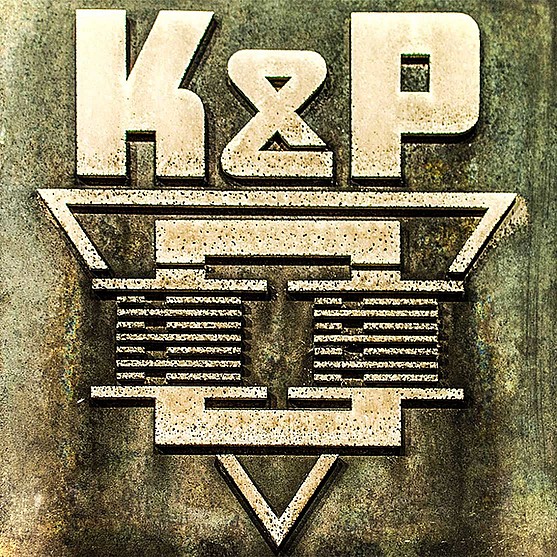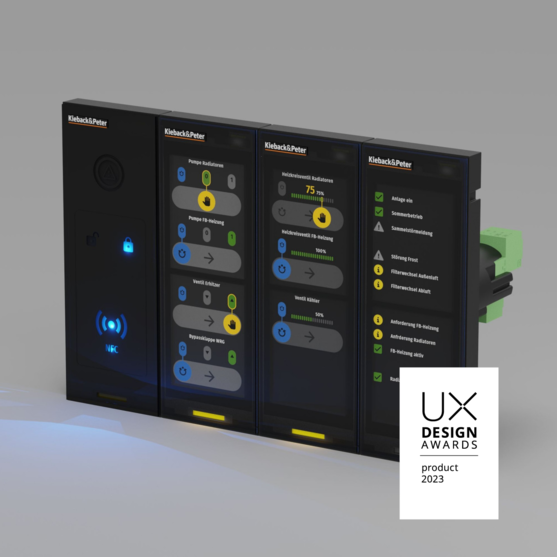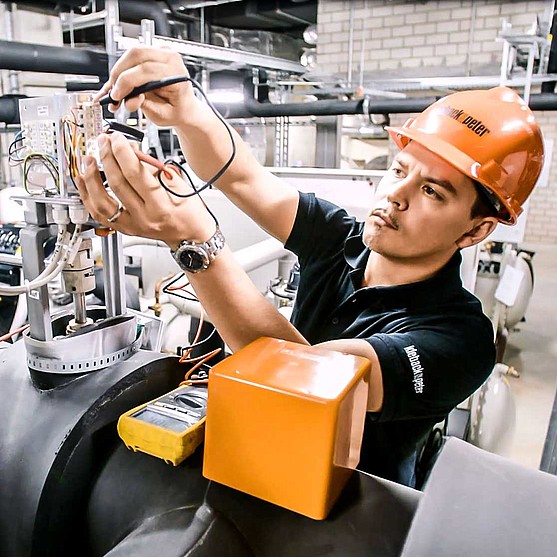Foundation in Berlin in 1927
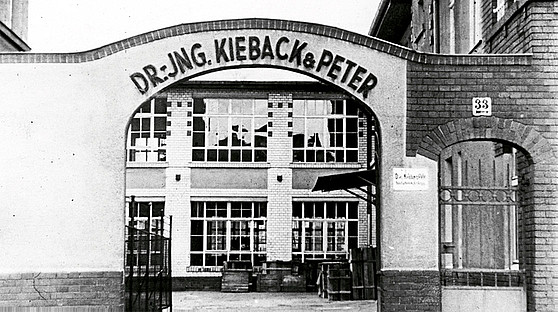
On February 24, 1927, Paul Peter and Erich Kieback found the small “factory for mechanical controllers” in Berlin. The original business idea is for closed-loop control of high temperature furnaces for the electrical industry, which is booming at the time. The founders increasingly apply their knowledge of industrial applications on residential and commercial buildings. The company grows: One of the first major projects is the closed-loop control of the heating systems at the Berlin-Tempelhof airport, which at the time has the largest surface area of any building in the world.
PASSIONATE PIONEERS SINCE:
00
Years
00
Months
00
Days
00
Hours
00
Minutes
00
Seconds
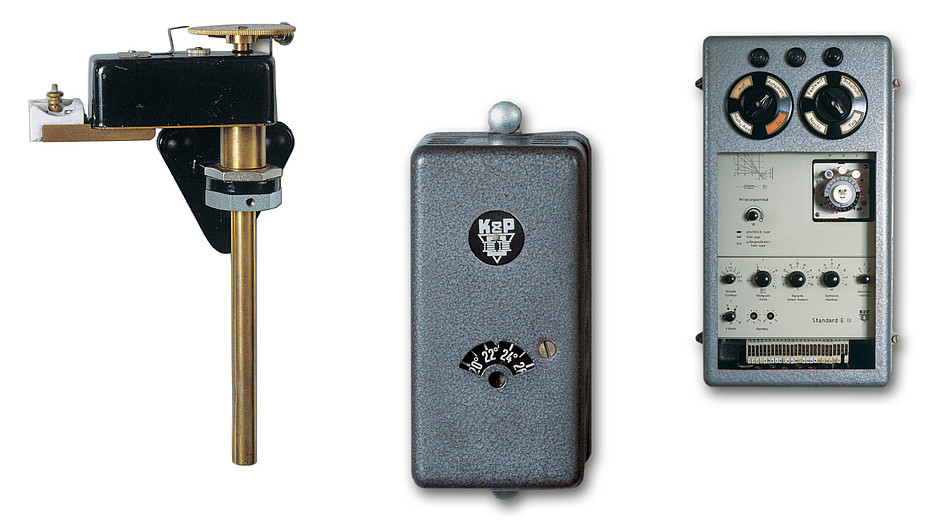
Our early days are characterized by pioneering achievements in control technology. In the analog era, Kieback&Peter primarily develops room thermostats, actuators, outdoor and supply temperature sensors.
The leap into the digital age
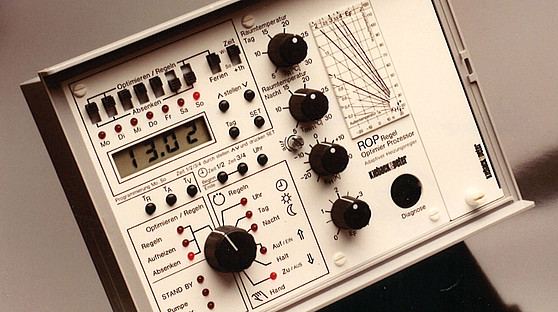
The control optimizer processor (ROP) – the first digital controller to rely on an analog user interface – is unveiled in the 1980s. Long before fashionable terms such as “usability” and “user experience” establish themselves, Kieback&Peter is already committed to the philosophy behind them: Enabling simple and intuitive operation for users, to ensure that they enjoy using our solutions. The passion for the simple is a common thread running throughout the history of Kieback&Peter.
Pioneering spirit in the 1990s
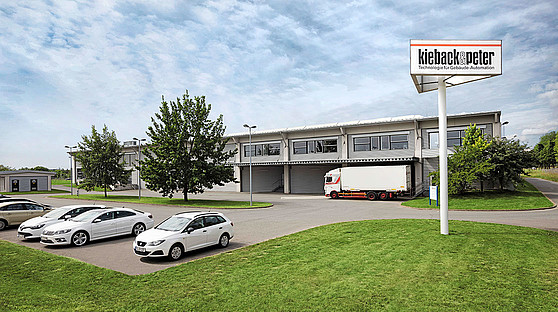
The fall of the Berlin Wall and the end of the Cold War ensure a mood of optimism in the 1990s. An important phase of growth also begins for us: In addition to the branches in West Germany, Kieback&Peter establishes five locations in the new Federal states in Germany and acquires its newly built company headquarters in Berlin-Neukölln. The Mittenwalde production facilities are built at the gates of the newly crowned capital of Germany, thus creating new jobs in Brandenburg. Our internationalization also progresses rapidly with the foundation of new subsidiaries abroad.
From Digitization to Artificial Intelligence

The smart green building is a vision of the future for dealing with urbanization, the increasing consumption of resources and other global challenges. Thanks to networked meta systems, virtual services and artificial intelligence (AI), buildings can become even more efficient, safe and comfortable. The flexible hardware and software produced by Kieback&Peter helps to create the basis for doing so. As does the secure, structured exchange of data. We work on new, smart solutions for the future in interdisciplinary teams together with various partners. One example of this is predictive control, which does not just use building data, but also interfaces to incorporate weather forecasts and energy prices in control strategies. Another example is integrated, interdisciplinary planning for sustainable buildings based on Building Information Modeling (BIM).



